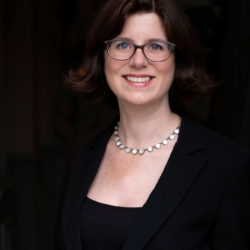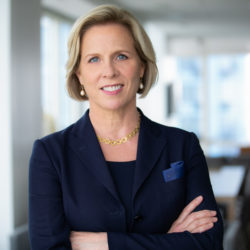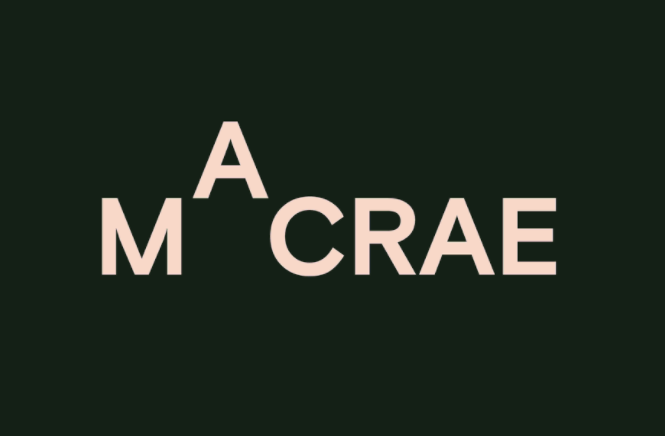A once-in-a-century pandemic has created one of the most topsy turvy years ever for law firms. While many have shown remarkable resiliency, uncertainty continues to loom.
But even amidst the tumult of 2020, the race for talent has not stopped. Nor has the growing importance of diversity and inclusion.
To take stock of the post-pandemic lateral market, and what it means for women, The WILEF Tribune’s Andrew Longstreth recently spoke with the founder of the transatlantic recruiting boutique Macrae, Joe Macrae, and three of his colleagues; Managing Directory Patty Morrissy in New York; Partner Natasha Innocenti in San Francisco; and Managing Director Eleonora Wäktare in London.
Below is an edited transcript of that conversation.

Joe Macrae
Andrew: Joe, how has the lateral market fared generally?
Joe: When COVID started, there was huge uncertainty and an expectation that firms might pull down the shutters, hunker down and not do anything. But very quickly it became apparent there were two camps that were staying active in the market.
One camp included firms that either hired some really good laterals following the financial crash in 2008 and learned from that experience. The other camp included firms that pulled down the shutters after ‘08 and later realized that doing so was a big mistake because they missed out on good talent. Those firms told us early on in the pandemic, “Yes, it’s very uncertain but don’t forget us. We’re still focused on our strategy, so bring us good opportunities.”
Andrew: There have been regional differences in the lateral market that we should note. Northern California, for example, has been an exceptionally hot market. What explains that?

Natasha Innocenti
Natasha: The Northern California legal market has grown up a lot. It used to be all about emerging companies and venture capital. But avenues of finance have broadened with more lending, growth equity and traditional private equity. That in turn has made the legal market more sophisticated with more needs to serve a growing corporate base.
It used to be that most high-end elite work generated in Northern California went to New York firms, even though they didn’t have a presence here. You are starting to see that they have to be here now.
Andrew: What’s been going on in Europe?

Eleonora Waktare
Eleonora: At the beginning of COVID, there were a few weeks where everybody was just frozen on the spot, wondering what is happening. But much sooner than expected, some firms began acting in an opportunistic manner, saying, “Now is the time to snatch talent from firms seen as more fragile.” We’ve also seen firms take measures to protect themselves by changing their compensation systems in order to keep the rainmakers in their firms.
So, it has been much busier than expected, and there are hot practices. Bankruptcy and debt restructuring lawyers, for example, are in demand. The regulatory environment in Europe is changing, and so, suddenly, a rather niche practice, like life sciences regulatory, is becoming very hot. Then there is privacy and cybersecurity, which are super-hot as well.
Andrew: Has COVID made recruiting easier in any meaningful way?

Patty Morrissy
Patty: It has certainly made the recruiting process much more efficient. People don’t have to jump on a plane and visit other offices. So, some of the deals we have worked on have moved very rapidly for that reason.
Andrew: But overall COVID hasn’t been great for many women, who typically take on a disproportionate amount of household duties, right?
Eleonora: The biggest challenge is for women with young children, whether they are partners already or are trying to make partner. Suddenly, they have to juggle their work with childcare and their children’s homework. Even if they have a helpful husband or partner, it’s not always easy.
Andrew: Natasha, ten years ago, you helped launch WILEF’s first chapter outside of New York and have seen how law firms’ actions and attitudes have changed toward women and diversity. How is that being played out in the lateral market today?
Natasha: That’s right. I was on WILEF’s board for about six years. I also led the Leadership Council for Legal Diversity, which was a group of about 15 firm chairs of the Am Law 50 law firms. It was always clear that their hearts were in the right place. The thing that has changed is how it has manifested in lateral hiring.
The focus for so many years was on retention and advancement and helping women become business developers, which was helpful and good, but it just did not cure the problem. So, now firms are using lateral hiring to promote diversity and inclusion. Every single client call we have is focused on diversity.
Andrew: Are there any areas of the law where women are in particularly high demand?
Patty: As Natasha pointed out, because firms are using lateral hiring as a way to promote diversity and inclusion, firms are very focused on the practice areas where they need more women. For instance, at many big firms, there tends to be fewer women in the transactional practice groups, so firms will call on us to specifically find women for their transactional practices. And for the types of transactional work that are in particularly high demand, such as M&A or Private Equity, we are seeing women’s compensation increase quite dramatically when they move.
Andrew: What advice would you give to a woman partner looking to make themselves more appealing in the lateral market?
Natasha: I always say manage your career. Do not think that you owe your firm anything because they made you a partner. They did not make you a partner; you made partner, and you need to know if you are fairly paid. Also: don’t wait too long. Women do tend to wait too long to make a move, even when they have several fundamental reasons why they should, including compensation but also conflicts or billing rates.
Joe: One other point, which I claim no ownership of, but I just found really interesting when it came up at a conference: Often when women are made partner, they get asked to take on a disproportionate number of committee roles, diversity roles, associate mentoring and hiring roles, etc.
The advice that I heard, which made sense to me was, “Great, do some of that. But don’t do it at the expense of building your practice and your client base and your business.” Ultimately, law firms fundamentally look at what a lawyer has achieved in their practice.
Patty: I agree with Joe’s point, but it is tricky. Because there are fewer women partners, they are asked at least twice as often as men to oversee key administrative support areas such as recruiting. At the end of the day, you have to tread very carefully about what you take on and why, so that it does not come at the expense of developing your own business. So for instance, if overseeing the recruitment function means you will have greater access to the highest reaches of the firm, you may wish to take it on for purposes of exposure and the opportunity to better understand the practice areas of the firm outside of your own. But be strategic – the bottom line for women is that having your own book gives you greater empowerment over your career.
Andrew: What is the best way to go about testing your value in the market? Does it mean reading surveys or meeting with folks like you?
Joe: Surveys are, by definition, a blunt instrument, because they just put people in categories or buckets. We encourage candidates to find somebody they trust and has their best interests at heart. Even if they are not looking to move, having a trusted career advisor/mentor is important.
Natasha: There is a wide continuum of how people do this job, but I have had years where I placed 12 partners, and the shortest length of relationship of any one of those was eight years.
You just build a reputation for being helpful and thoughtful and informative, and when the time comes, you have a relationship built on trust. But it takes time to generate that kind of reputation.
Eleonora: I would add that female candidates are often too modest about their client relationships. Often, when they go back and reconnect to potential clients, they realize they actually have a stronger network than they think and that their future projections are brighter than thought.
Andrew: What is the lateral market going to look like in 2021?
Natasha: I think we might see an uptick in some of the regulatory practice areas. Then of course there is always the possibility of a change of administrations, which would lead to lots of revolving door government moves.
So, that sort of thing will all bleed into 2021. Having said that, we are also, I think, experiencing a delay in the economic impact of COVID. So, it’s still very uncertain and certainly a little scary. Thank goodness for litigation.
Joe: Broadly speaking I think a lot of firms are pinching themselves and saying, “Gosh, we thought the numbers were going to go off a cliff, but they haven’t.”
But then when we ask them how they see next year, they pinch themselves even harder and kind of echo what Natasha said. It’s hard to believe that there is not going to be some kind of reckoning where the disconnect between stock market valuations and the number of people going to the movies or getting on an airplane collide.
It’s kind of back to where we were in February and March. How will firms react? Our expectation is that a healthy proportion of firms will say, “This continues to be an opportunity for us to attract top talent from firms that are less confident about their platform.”
Then we may see a number of firms starting to struggle in terms of meeting their own liabilities, in which case you may have partners forced into the market. So, we will see.



